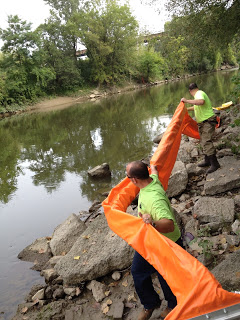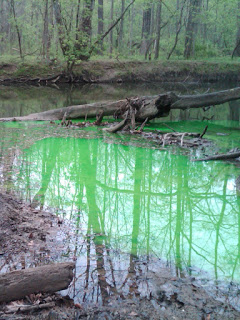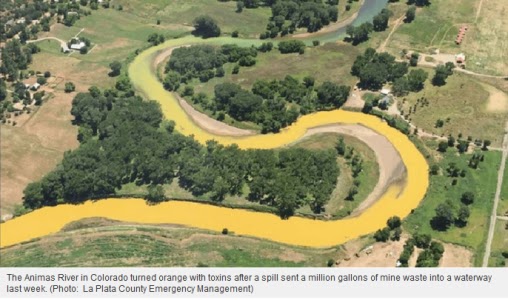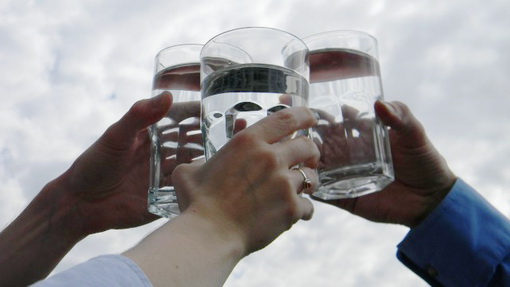PERSPECTIVE: What if a toxic spill the likes of Colorado’s #AnimasRiver struck the Cuyahoga?
Posted by Jared Shepherd
- 4223 Views
- August 11th, 2015
- in Miscellaneous
- No Comments
While the Cuyahoga River has had its share of challenges, none compare to the catastrophe going on in Colorado.
An Environmental Protection Agency project to reduce pollution seeping into the Animas River resulted in a breach that caused an estimated 3 million gallons of gold-mine wastewater to rush into the river, turning the water mustard yellow and leaving officials scrambling to assess the damage while residents seek answers and await test results.
As an agency prepared to respond to HAZMAT situations, I asked our Water Quality & Industrial Surveillance team how we might respond to a disaster like this had anything like it struck the Cuyahoga River.
Scott Broski put it pretty bluntly.
“In terms of control, based on what has been released and the volume, I’m not sure what anyone can do to control a spill of this magnitude.” Scott is the Superintendent of Environmental Services, and said a major challenge in this situation is an inability to strategically collect the material.
 |
| WQIS staff place a containment boom during hazardous spill training in 2013. |
“This material is not like oil, so there is not opportunity to try and set up containment booms.”
In what would likely be a regional Emergency Response scenario, “I assume an incident of this size would have resulted in the activation of an Emergency Operation Center, and they would be using the incident command system,” Scott said.
“We would get plugged into that structure, most likely under Operations and Planning, and would do whatever the Incident Commander called for to try and control the spill or assist with monitoring.”
When a hazardous spill caused a massive fish kill on the Rocky River in 2012–the closest event our team considered to be anything similar to the Animas River scenario–Supervisor of Environmental Assessment Seth Hothem was on scene to assist with the response.
“We spent days trying to track down where the spill had originated,” he said, “both by looking in sewers and walking streams in the area to see if we could observe anything abnormal. We also collected water chemistry samples at multiple points in the river downstream from the spill to determine any impacts.”
 |
| Dye helped trace the source of the toxic spill that affected the Rocky River in 2012. |
It is unclear what lasting impacts the Animas River spill will have on the environment. If anything similar were to strike close to home, Broski said our monitoring expertise would be a critical commitment.
“After the spill had passed we would be able to assess the fish and bug populations to determine the effect on the aquatic life, as well as continuing long-term water quality sampling and analyses.”



